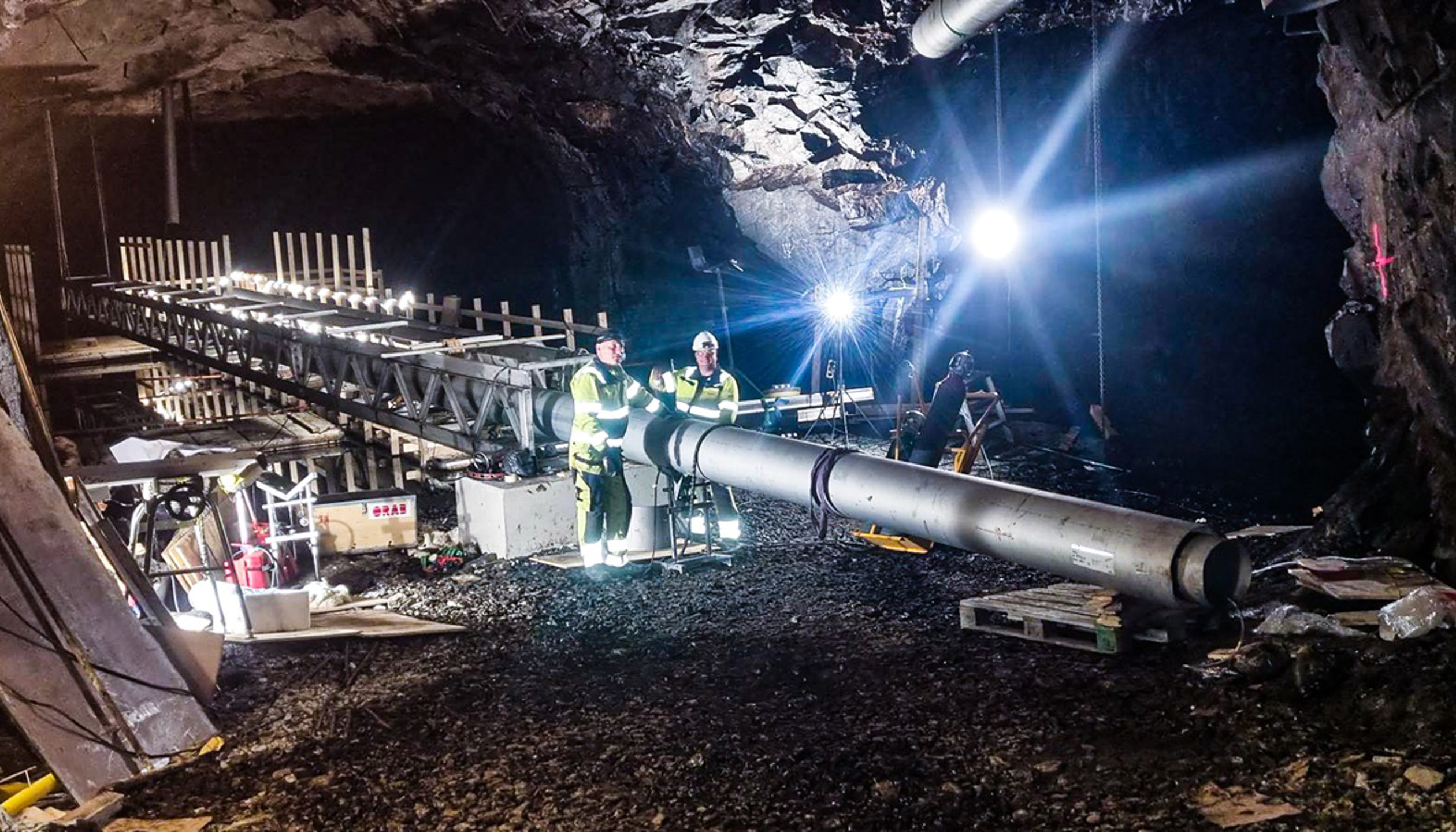
Former oil storage facility becomes energy store for district heating and electricity production
A cavern in Västerås that was previously used to stockpile oil is being converted into thermal storage for the production of district heating and electricity. With a volume of 300,000 cubic metres, the cavern will become one of the world’s largest hot water reservoirs. Instalco company Orab Entreprenad AB has an important role to play in the conversion.
The cavern has not been used since the 1980s and is now being converted by the client, Mälarenergi.
While the cavern is being cleaned up from the oil, Orab has been working to install new pipe systems to be used in the cavern’s new function. The largest pipes have a diameter of 400 millimetres and the total length of piping is around 1,000 metres.
“
We’ve been working to install pumps and pipes so that the water can circulate around the facility. It’s been a precision job, and at its peak we had 14 people working in the cavern simultaneously,” says Lars Österberg, department manager at Orab Entreprenad in Karlstad.
He confirms that the unusual and very rare type of installation makes this a unique project. Orab works from floating pontoons to lower the pipes into the 20-metre-deep basin. The pipe structures were assembled and launched into the cavern spaces using telescopic loaders. a risky operation that required meticulous planning.
Part of the city of Västerås’ climate efforts
The facility is expected to be operational in 2024. With a volume of 300,000 cubic metres, the cavern will be one of the world’s largest hot water reservoirs and have a storage capacity of 10–13 GWh.
“We are of course proud to be involved in this project, which is an important part of the city of Västerås’ climate efforts,” says Orab CEO Tomas Börgesson.
Mälarenergi says the cavern will increase delivery security for district heating customers while also enabling Mälarenergi to plan better and optimise production – something that will further reduce emissions of fossil carbon dioxide from itscombined heat and power plant.”
“Converting the cavern into a hot water reservoir will also make it possible to increase electricity production in Västerås. This is because the combined heat and power plant in Västerås produces both electricity and heat, but gives priority to producing heat for the city,” explains Rickard Svensson, project manager at Mälarenergi AB.
Surplus energy to be stored underground
The relative proportions of electricity and heat production are determined based on the outside temperature. When it is cold, electricity production has previously needed to be reduced in order to deliver the required heat. In the summer, however, there is surplus heat. The new facility in the cavern will enable this surplus energy to be stored underground and used on cold days.
“It means that Mälarenergi will not need to reduce electricity production when it’s cold outside. Storing heat is an effective way to balance the electricity system and even out the electricity market," says Rickard Svensson.
11/09/2024
Subsidiaries
